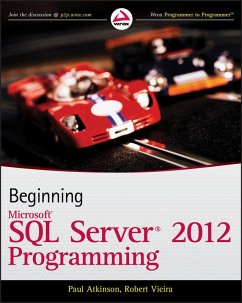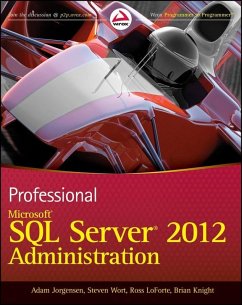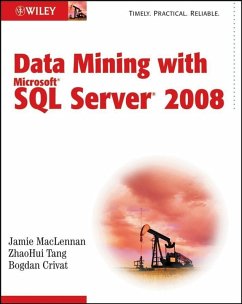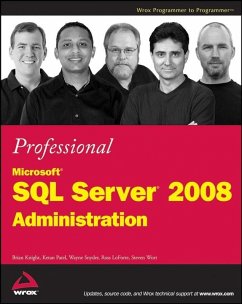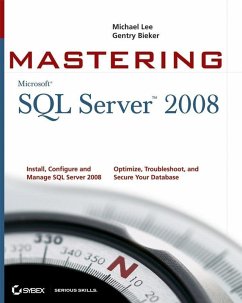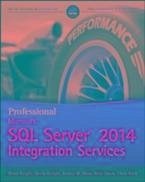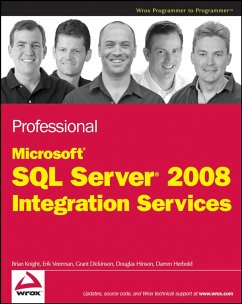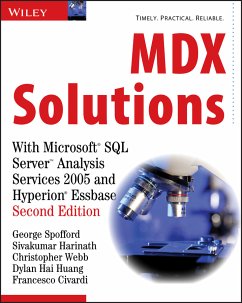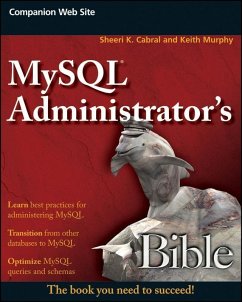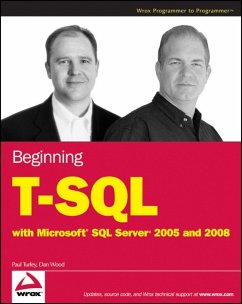
Microsoft SQL Server 2012 Bible (eBook, PDF)
Versandkostenfrei!
Sofort per Download lieferbar
38,99 €
inkl. MwSt.
Weitere Ausgaben:

PAYBACK Punkte
0 °P sammeln!
Harness the powerful new SQL Server 2012Microsoft SQL Server 2012 is the most significant update to this product since 2005, and it may change how database administrators and developers perform many aspects of their jobs. If you're a database administrator or developer, Microsoft SQL Server 2012 Bible teaches you everything you need to take full advantage of this major release. This detailed guide not only covers all the new features of SQL Server 2012, it also shows you step by step how to develop top-notch SQL Server databases and new data connections and keep your databases performing at pe...
Harness the powerful new SQL Server 2012
Microsoft SQL Server 2012 is the most significant update to this product since 2005, and it may change how database administrators and developers perform many aspects of their jobs. If you're a database administrator or developer, Microsoft SQL Server 2012 Bible teaches you everything you need to take full advantage of this major release. This detailed guide not only covers all the new features of SQL Server 2012, it also shows you step by step how to develop top-notch SQL Server databases and new data connections and keep your databases performing at peak.
The book is crammed with specific examples, sample code, and a host of tips, workarounds, and best practices. In addition, downloadable code is available from the book's companion web site, which you can use to jumpstart your own projects.
Get thoroughly up to speed on SQL Server 2012 with Microsoft SQL Server 2012 Bible.
Microsoft SQL Server 2012 is the most significant update to this product since 2005, and it may change how database administrators and developers perform many aspects of their jobs. If you're a database administrator or developer, Microsoft SQL Server 2012 Bible teaches you everything you need to take full advantage of this major release. This detailed guide not only covers all the new features of SQL Server 2012, it also shows you step by step how to develop top-notch SQL Server databases and new data connections and keep your databases performing at peak.
The book is crammed with specific examples, sample code, and a host of tips, workarounds, and best practices. In addition, downloadable code is available from the book's companion web site, which you can use to jumpstart your own projects.
- Serves as an authoritative guide to Microsoft's SQL Server 2012 for database administrators and developers
- Covers all the software's new features and capabilities, including SQL Azure for cloud computing, enhancements to client connectivity, and new functionality that ensures high-availability of mission-critical applications
- Explains major new changes to the SQL Server Business Intelligence tools, such as Integration, Reporting, and Analysis Services
- Demonstrates tasks both graphically and in SQL code to enhance your learning
- Provides source code from the companion web site, which you can use as a basis for your own projects
- Explores tips, smart workarounds, and best practices to help you on the job
Get thoroughly up to speed on SQL Server 2012 with Microsoft SQL Server 2012 Bible.
Dieser Download kann aus rechtlichen Gründen nur mit Rechnungsadresse in D ausgeliefert werden.




